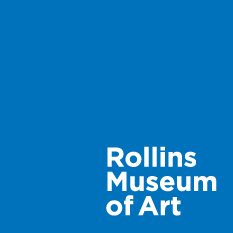Artist Steve Locke probes perceptions of race, memory and male identity through his multi-disciplinary practice. Born in Cleveland, Ohio, and […]
Photographer Jess T. Dugan Explores the Identity, Desire, and Connection of Their Subjects
Jess T. Dugan is a photographer whose work largely focuses on members of the LGBTQ+ community. Dugan makes photographic portraits […]
Meet Pathways 2024: The Carlos Malamud Prize Winner Tenee’ Hart
On May 30, 2024 at the UCF Art Gallery exhibition opening, Juror Ginger Gregg Duggan announced Tenee’ Hart as the […]
Photographer An-My Lê Documents The Experiences And Landscapes Of War
An-My Lê is a contemporary photographer who primarily focuses on documenting the experiences and landscapes of war. Unlike the photojournalist, […]
Salvatori Fellow Sami Wilde (’24): An Inside Look Into How I Spent My Senior Year at Rollins Museum of Art
Working at the Rollins Museum of Art has been a large part of my time at Rollins College. Before I […]
Artist Maya Lin’s Silver Thames Inspires Action, Restoration, and Hope
Maya Lin If we had a God’s-eye view of our world, would it affect our actions? Would we make different […]
Visit Untitled by Artist Jun Kaneko, a Pioneer of Monumental Ceramics, at Rollins Museum of Art
Jun Kaneko (Japanese, b. 1942)Untitled, 2003Glazed ceramicGift of Alan Ginsburg. 2017.17 Jun Kaneko Jun Kaneko was born in Nagoya, Japan in […]
The Secret, Alachua, FL by Photographer Michael Bühler-Rose
How The Secret, Alachua, FL by photographer Michael Bühler-Rose helps expand our sense of what cultural exchange might mean.
The Intersections of Art and Business Education
I recently gave the following address to a group of alumni from the Crummer Graduate School of Business. As Rollins […]
Student Spotlight: Rollins College Student Sophie Foster Shares What It’s Like To Be The Fred W. Hicks Curatorial Fellow at Rollins Museum Of Art
What is it like to work at Rollins Museum of Art? We asked Rollins College Honors Art History Major Sophie […]
Join Rollins Museum of Art for FREE family fun at Spring Fling
Enjoy Spring Fling, a FREE day of family fun at Rollins Museum of Art! With indoor and outdoor arts activities, […]
Lorna Simpson: Artist and Pioneer of Conceptual Photography
A pioneer of conceptual photography, Lorna Simpson is best known for her large-scale works combining images and text. Simpson’s photography often questions and challenges conventional views on gender, sexuality, race, identity, and culture in the United States.
Melvin Edwards: Weapon of Freedom at Rollins Museum of Art
Melvin Edwards (American, b. 1937)Weapon of Freedom, 1986Welded steel11 x 9 x 6 in.The Alfond Collection of Contemporary Art, Gift of […]
Celebrate Black Artists With Resources from the Rollins Museum of Art
The Rollins Museum of Art honors and recognizes the impact that Black artists have in art and culture. Explore the resources below that showcase […]
Seven Questions with Elena Vaamonde Work-Study Student at Rollins Museum of Art
As an academic museum, we know how essential hands-on experience is for developing the skills necessary for a successful career. […]
